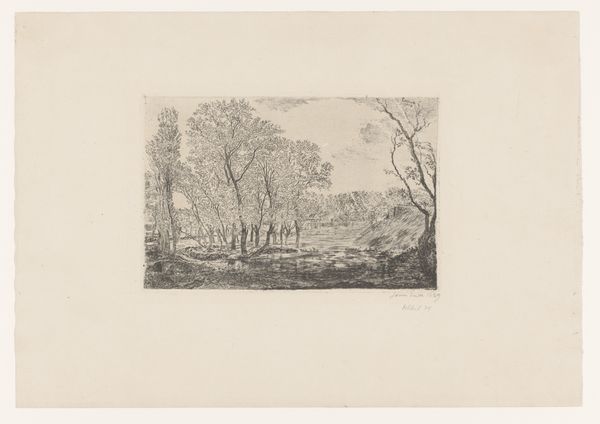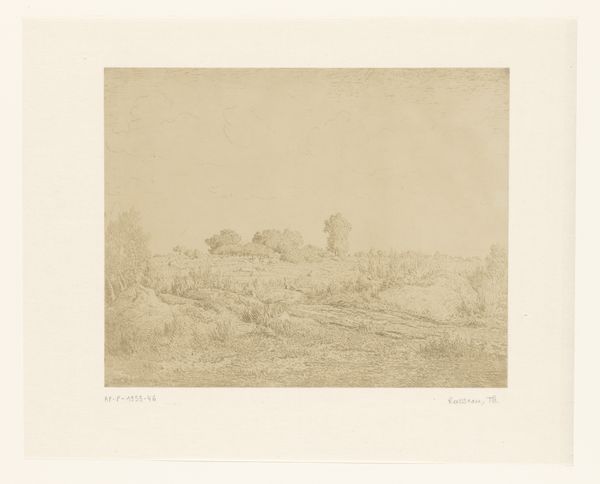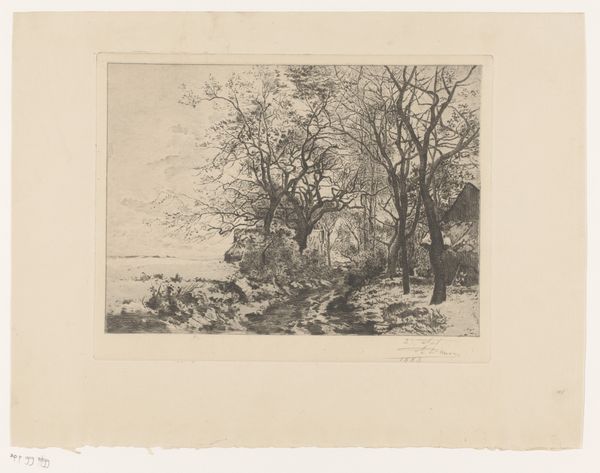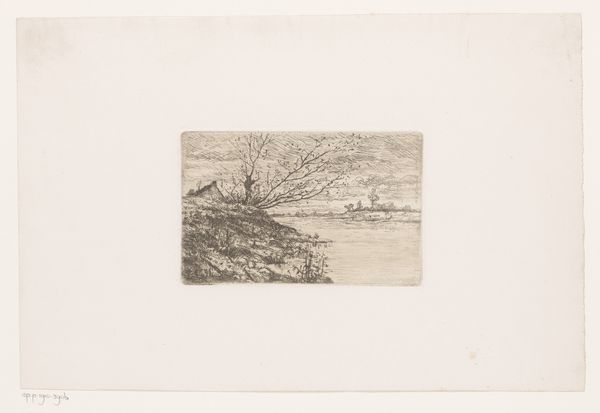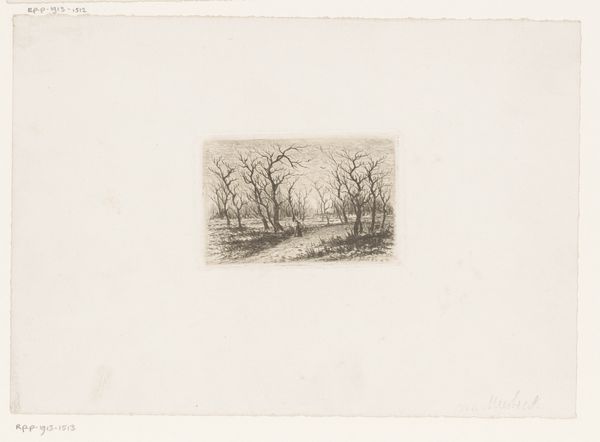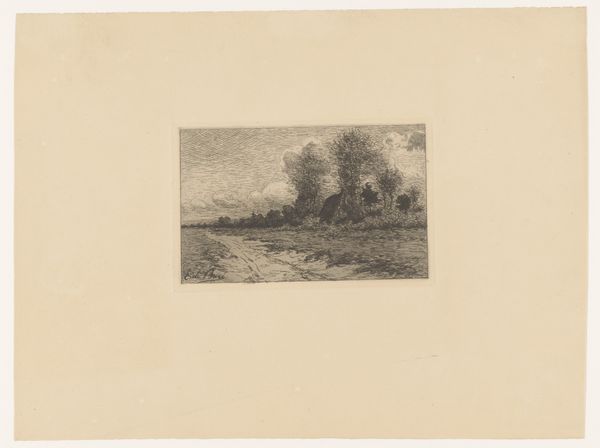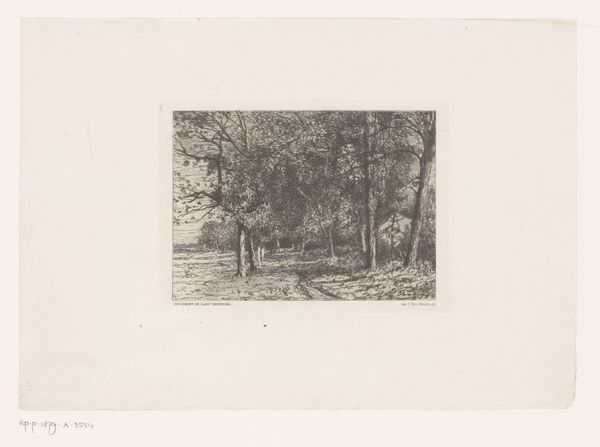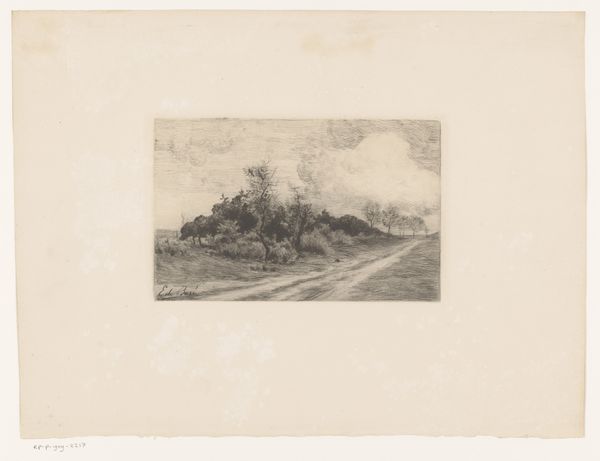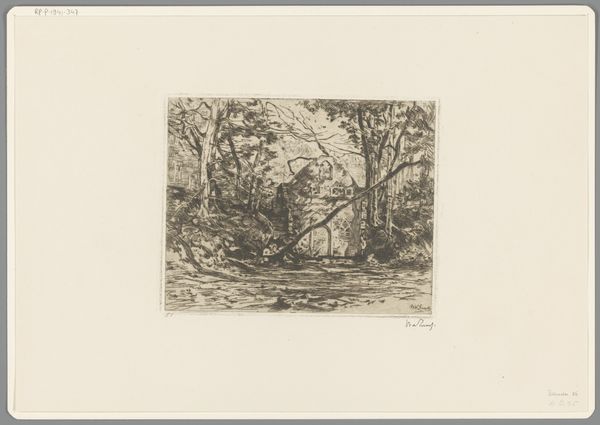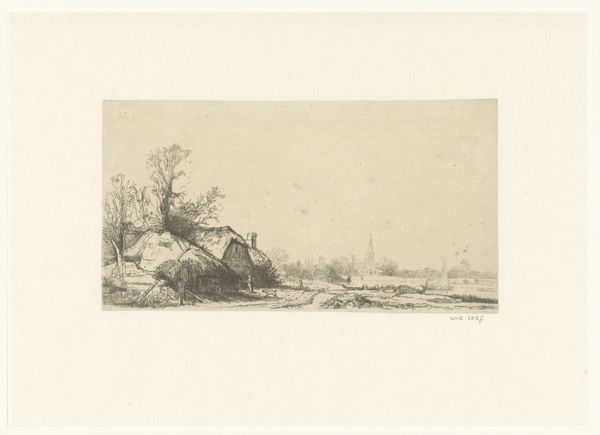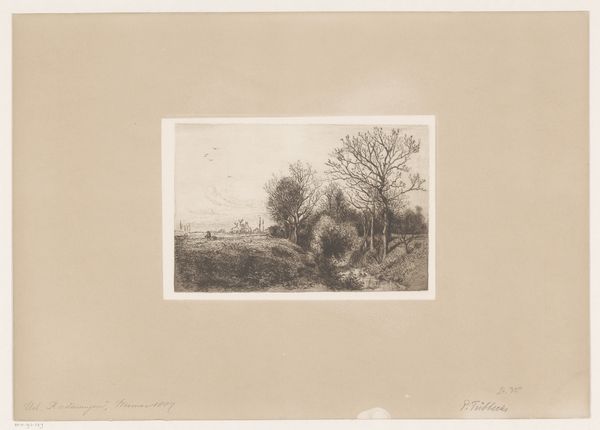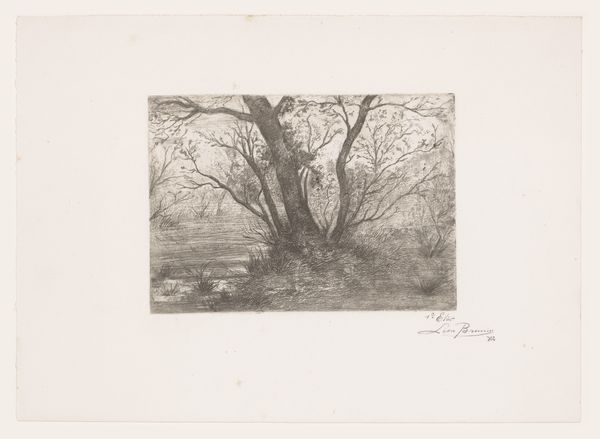
Dimensions: height 154 mm, width 241 mm
Copyright: Rijks Museum: Open Domain
Paul Wilhelm Tübbecke made this etching of a couple on a path with umbrellas, likely around 1904. An etching is essentially a drawing made with acid. The artist covers a metal plate with a waxy, acid-resistant ground, then scratches an image into it with a needle. The plate is then immersed in acid, which bites into the exposed metal, creating incised lines. Ink is applied, and the plate is pressed onto paper, transferring the image. The dense network of fine lines gives the scene its tonal depth and texture. Notice how the etched lines create a sense of atmosphere, particularly in the rain-soaked ground and the overcast sky. The way the artist coaxes such nuance from a relatively simple process demonstrates skill and precision. In an era rapidly embracing industrial production, the labor-intensive process of etching retained a connection to handcraft. The marks made into the metal plate, and the act of printing the image, reflect the careful, deliberate work of the artist. Understanding these material processes allows us to appreciate the labor embedded in the image, blurring the lines between fine art and craft.
Comments
No comments
Be the first to comment and join the conversation on the ultimate creative platform.
